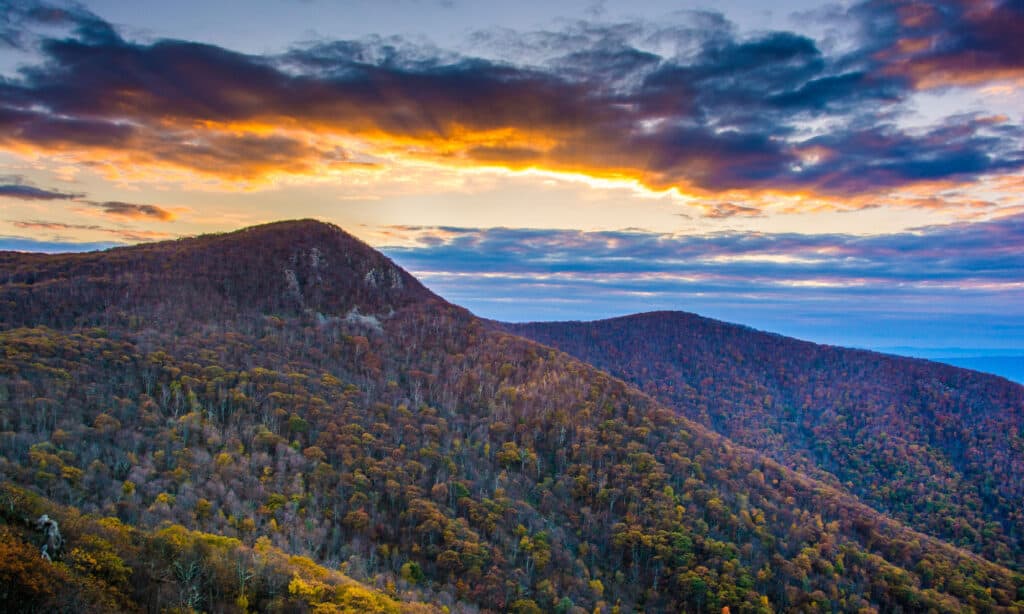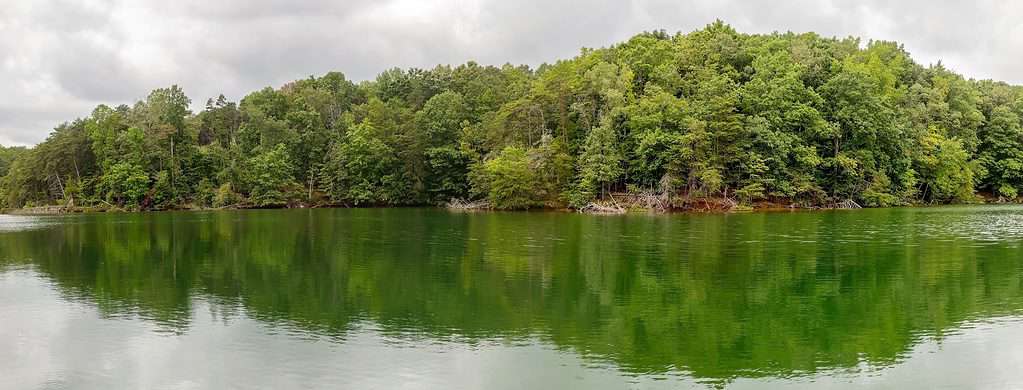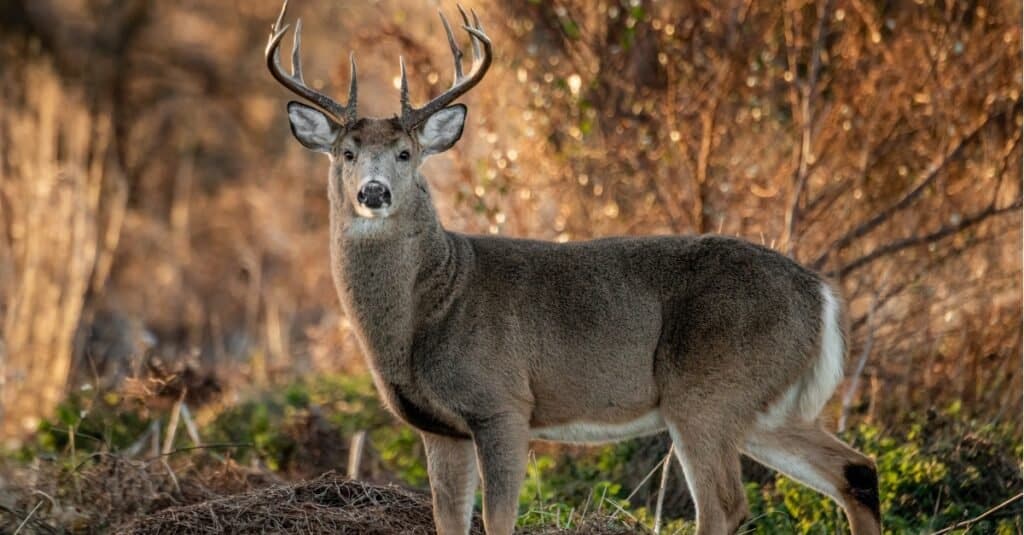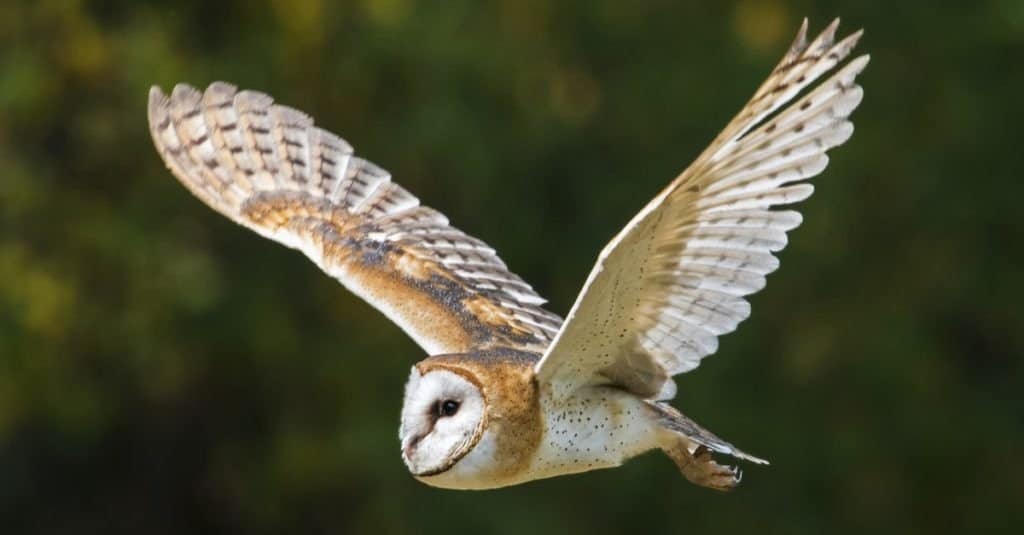Virginia is the country’s 35th-largest state in the United States, encompassing 27 million acres. The state is home to the Blue Ridge Mountains, the Shenandoah National Park, and countless smaller parks. It is also home to a treasure trove of remarkable wildlife species. There’s the Cumberland slider, a large aquatic turtle found in small ponds and wetlands throughout the state. The dark meadow vole lives among grassy fields and woodlands in the northcentral part of Virginia. And, of course, there’s the black bear, which roams the state’s woods.
Residents and conservation agencies are working hard to protect this state’s land and wildlife. Who are the biggest players in keeping Virginia natural and wild? Read on to learn about the top landowners in Virginia.
1. Department of Conservation and Recreation — 4,180,000 Acres

The Virginia Department of Conservation and Recreation (DCR) oversees all state parks in Virginia, such as Shenandoah National Park.
©iStock.com/AppalachianViews
The Virginia Department of Conservation and Recreation (DCR) owns 4,180,000 acres. This makes them the state’s largest landowner and a key player in Virginia’s land conservation efforts.
The DCR is responsible for protecting and managing public lands. They also preserve natural resources and work to maintain or enhance air and water quality. The agency also works with local, state, and federal agencies to ensure that public lands are managed responsibly.
DCR is also responsible for tracking Virginia’s progress toward important land conservation goals. These goals include the Chesapeake Bay 2000 Agreement’s goal of protecting 20% of the watershed by 2010. Through their work, they are helping to protect four million acres of land for future generations to appreciate and enjoy.
How does the DCR accomplish this mission? By providing funding, expertise, education, and improved access to the state’s public lands. Through the Virginia Outdoors Plan and Land Conservation Initiative, they have helped protect 400,000 acres of land in just four years.
Every $1 that goes into land conservation provides Virginia with $4 in economic value. Economic value includes things such as natural services and goods. The DCR’s efforts to protect more than four million acres of public lands are essential for making Virginia a wonderful place to live, work, and visit.
2. Federal Government — 2,400,000 Acres

Smith Mountain Lake Virginia State Park is just one of the 22 state parks in Virginia.
©Noel V. Baebler/Shutterstock.com
The federal government owns 2,400,000 acres in Virginia. This makes them top landowners in Virginia. The land is split into various categories. Categories include 22 National Park Service units and three national monuments. There’s also one national forest, 24 wilderness areas, one national historic site, and four national historic trails.
Virginia chose the last Saturday of September as Public Lands Day to recognize and celebrate the importance of public lands in its state. After all, the federal government’s land in Virginia plays a vital role in the state’s economy.
Almost 22 million people visited Virginia’s monuments and national state parks in 2013 alone. This activity brought in $870 million in spending. This money was able to fund local jobs, improve infrastructure, and create educational opportunities.
Aside from providing economic benefits, the federal government’s land also offers recreational opportunities. People can go camping, fishing, hiking, biking, swimming, and many other activities on their land. Additionally, it serves as an essential refuge for wildlife species like deer, bears, and birds of prey that call these areas home.
The federal government’s ownership of 2.4 million acres in Virginia is an invaluable asset to the state. It brings economic and recreational opportunities to residents and visitors and provides essential habitats for wildlife.
3. The Boy Scouts of America — 17,500 Acres
The Boy Scouts of America are another one of the largest landowners in Virginia. They own 17,500 acres over in the Blue Ridge Mountains, just east of the Ridge and Valley Region. The land is called the “Blue Ridge Scout Reservation.” The reservation has a summer camp, a year-round program, and a hunting season. There’s also a Base Camp and an on-site High Adventure Program.
The Blue Ridge Parkway starts in Waynesboro, Virginia and ends at milepost 469 in Cherokee, NC. The thriving nature location is one of the most breathtaking places in Virginia. Glancing at the landscape, you’ll notice that a lot of the leaves have a blue color. That’s because the Blue Ridge Mountains are home to a lot of oak trees, and other hearty trees that release isoprene. The isoprene protects the leaves from heat and gives them their famous blue hue.
4. Falkland Farms — 7,300 Acres

White-tailed deer are one of the many mammals that live in Falkland Farms, Virginia’s largest hunting plantation.
©iStock.com/Harry Collins
Falkland Farms was purchased in 2019 by Epic Games founder and CEO Tim Sweeney. Sweeney is a conservation philanthropist. He has spent hundreds of millions to preserve more than 45,000 acres of forest throughout North Carolina. He donated the farmland and entrusted it to the Department of Conservation and Recreation. This significant investment will help protect thousands of acres!
Now, the DCR oversees Falkland Farms, which is 7,300 acres. This land is Halifax County and consists of various habitats, including diverse wetland communities. This includes vast wetlands and 40 miles of streams. There are also riparian corridors. All of these areas are incredibly significant for biodiversity conservation. The area also has a unique pine system and rare oak trees.
The 11-square-mile property is home to wildlife species like white-tailed deer, wild turkeys, foxes, and other mammals and is the largest hunting plantation in Virginia. There’s even a bed and breakfast!
The DCR plans to offer public recreation opportunities on portions of Falkland Farm. However, the area will remain closed during this planning and transition period to ensure public safety.
Once finished, the project will provide a 40,000-acre contiguous landscape. The land will include permanently protected lands and waters. The restoration project will be under the guidance of the Virginia Natural Heritage Program.
5. Chuck Akre — 7,100 Acres
Chuck Akre owns the 7,100 acres in Virginia. He is the new owner of the famous Eldon Farms. These acres are now in the hands of Chuck Akre, who firmly commits to conservation. The property has a mix of open working landscapes and forests. His vision for the property is to restore native habitats while providing access to the public.
The land has the perfect climate and location to grow an abundance of forage such as hay, corn, soybeans, wheat, and some fruits and vegetables. Akre plans to use sustainable farming practices that will help the area flourish.
Eldon Farms History and Future
Virginia can rest easy knowing the Eldon Farms property is in good hands. The Akre family has three children and four grandchildren. The family will be able to preserve the land for generations.
The property is one of the most extensive undivided landholdings in the mid-Atlantic. It was once divided amongst many smaller owners, but Chuck Akre purchased them all and has stewardship over these 7,100 acres.
Eldon Farm’s History
Eldon Farms began when William Lane assembled several small farms in the 1960s. He purchased land for $600 an acre, which was astonishingly high then. Most lands were selling for closer to $400 per acre at the time. But Lane had a vision. With this investment, he created a vast landscape that has remained relatively untouched over the past few decades. The Lane family oversaw around 10,000 acres at one point, but it has since been sold off piece by piece.
Eldon Farm’s Future

Eldon Farms has 10
barn owl
boxes to promote the healthy reproduction of owls.
©Russ Heinl/Shutterstock.com
The Akres have kept a portion of that original land. They are now looking for ways to better use the property to benefit the surrounding community and protect its natural resources.
The farm isn’t currently under a conservation easement, but Mr. Akre said his family would consider placing the property under an easement.
After Eldon farms, another substantial piece of property in Virginia is Falkland Farms. This land also has a rich history and provides acres of habitat to all sorts of wildlife.
Summary of the 5 Top Landowners in Virginia
Here is a list of the 5 top landowners in the state of Virginia:
| Rank | Landowner | Land Size |
|---|---|---|
| 1 | Department of Conservation and Recreation | 4,180,000 acres |
| 2 | Federal Government | 2,400,000 acres |
| 3 | The Boy Scouts of America | 17,500 acres |
| 4 | Falkland Farms | 7,300 acres |
| 5 | Chuck Akre | 7,100 acres |
Final Thoughts on the 5 Top Landowners in Virginia
Now you know about the top five landowners in Virginia, from the federal government to the privately owned Eldon Farms. Thankfully, all five are working hard to restore and maintain their properties.
Over half of Virginia’s protected land (2,400,000 acres) is managed by the federal government. This includes national parks and recreation areas. There are also monuments and memorials, historic sites, wildlife refuges, military bases, and more. The federal government works with other agencies to ensure that these areas are preserved for future generations
The goal of these agencies is to create recreational opportunities for local residents and visitors while restoring and/or maintaining natural resources. With their efforts, over half of the state may soon be protected from development and available for everyone to enjoy.
The permanent conservation of Falkland Farms by the DCR has the potential to benefit generations to come. It’s also a testament to the DCR’s Virginia conservation commitment.
And then there’s Eldon Farms, which aims to preserve public lands for all Virginians while managing a cattle ranch. We can all be proud of this commitment to conservation and preservation. We look forward to watching these restoration projects progress and visiting when public access is granted.
The photo featured at the top of this post is © Jon Bilous/Shutterstock.com
Sources
- World Population Review, Available here: https://worldpopulationreview.com/state-rankings/federal-land-by-state
- Virginia Department of Conservation and Recreation, Available here: https://www.dcr.virginia.gov/aboutus#:~:text=The%20Department%20of%20Conservation%20and,and%20access%20to%20the%20outdoors
- Falkland Farms, Available here: https://www.dcr.virginia.gov/falklandfarms
- Land Trust of Virgina, Available here: https://landtrustva.org/2018/12/20/virginias-largest-private-land-trust-protects-another-182-4-acres-in-albemarle-county/
Thank you for reading! Have some feedback for us? Contact the AZ Animals editorial team.






